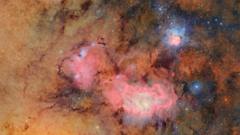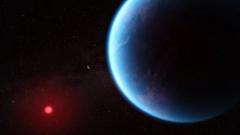The search for axions, the hypothetical particles linked to dark matter, has intensified as scientists delve deeper into the mysteries of the universe. Named after a detergent, axions are posited to form a crucial part of the elusive dark matter that makes up roughly five-sixths of our cosmic composition. This search could redefine our grasp of astrophysical phenomena and the nature of matter itself.
Gray Rybka, a physicist at the University of Washington and spokesperson for the Axion Dark Matter eXperiment (ADMX), emphasizes the urgency of the search. “For nearly 10 years we’ve been operating in a search mode, and any day we could make a discovery,” he explains, as researchers employ powerful magnetic fields to coax axions from the void.
This cosmic pursuit is not limited to laboratory experiments. Astronomers are exploring the movements of stars and the dynamics of galaxies, using data from the James Webb Space Telescope to uncover potential indicators of axion existence. The goal is significant: to uncover what constitutes the most substantial part of our universe invisibly.
Current scientific understanding suggests that only a small fraction of the cosmos is visible, with the vast majority composed of dark matter, which exerts its influence through gravity. This invisible substance, while undetected directly, plays a crucial role in the formation and interaction of celestial bodies.
Multiple theoretical candidates for dark matter have been proposed, but axions stand out for their potential to fill the gaps in the Standard Model of particle physics. Their detection would not only validate these theories but also reshape fundamental concepts surrounding dark matter and the universe's composition.
As scientists remain hopeful for breakthroughs, the search for axions continues to be a beacon of exploration in our quest to grasp the universe's underlying fabric and its myriad mysteries.











